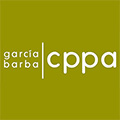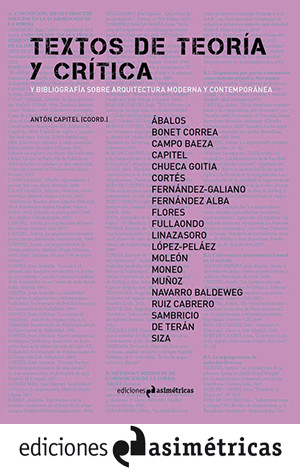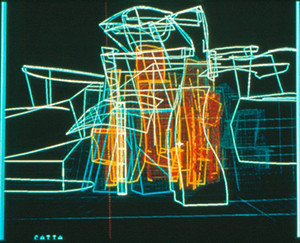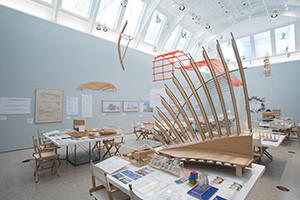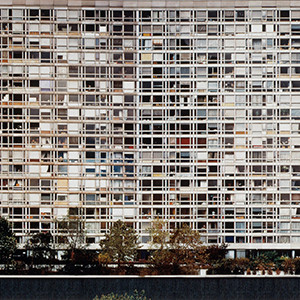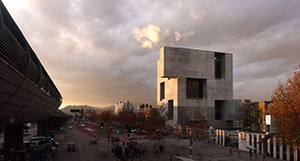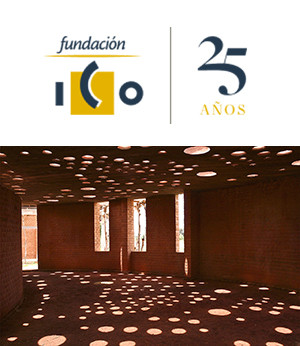Frank Lloyd Wright
U.S., 1935
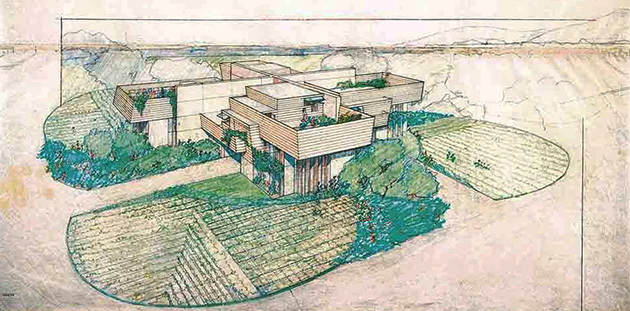 Proyecto Cloverleaf de viviendas usonianas. Pittsfield, Massachusetts. Frank lloyd Wright, 1942
Proyecto Cloverleaf de viviendas usonianas. Pittsfield, Massachusetts. Frank lloyd Wright, 1942
Esta utopía antiurbanística es una condensación de las ideas que propondría Wright como concepto para el futuro territorial de Norteamérica. Es una concepción que se contrapone a las recomendaciones de la Carta de Atenas, el manifiesto promocionado por los Congreso Internacionales de Arquitectura Moderna y que consideraba un error detestable. Frente a la concentración de la población en las ciudades, el arquitecto americano propondría una suerte de ruralización extensiva en la que cada familia dispusiera de una porción amplía de suelo, alrededor de un acre o 4.000 m2.
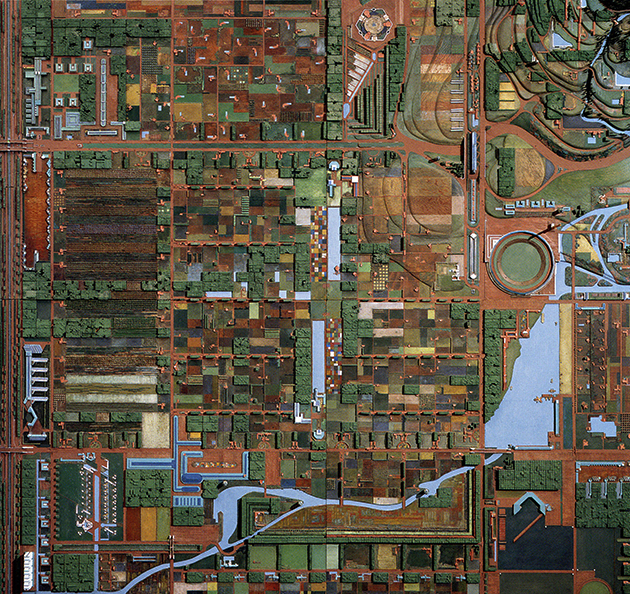 Maqueta general realizada para Broadacre, 1935
Maqueta general realizada para Broadacre, 1935
The ideas for the renewal of the cities of the great master of American architecture took shape in the years after the onset of the Great Depression, almost as a reaction to the great evils that occurred then, and it attributed to large urban. In 1932, published The disappearing city, a text that includes his views on a possible reorganization of the American territory and an outline of what would become Broadacre City project. A rewrite text recursively, and that would make a first review in 1945 under the title When democracy builds (When democracy builds). Would the same issue and in the final years of his life, in 1958, with third territorial project description imagined I would call The living city (The living city).
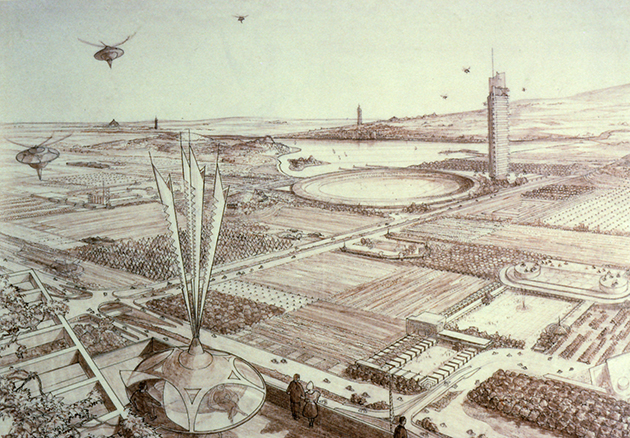 Broadacre perspective from one of the towers housing. In the first place, a “aerotor”.
Broadacre perspective from one of the towers housing. In the first place, a “aerotor”.
Against the usual lifestyles then, in Broadacre, the controversial architect retroutopía propose a kind of cutting neotecnológico, inspired by space images generated by the propagandists of the popular science fiction. It would be a project clearly opposed to urban and to also inspire a return to agricultural uses a supposedly happy and idealized Arcadia. Wright imagined the dissolution of cities in a vast territory crossed paths equal no at-grade intersections, through which circulate numerous motor vehicles. And where in addition, would "aerotores", individual ships small movement would navigate the air staff. This way of understanding access to space was probably a result of his passion for convertible vehicles of which was a conspicuous consumer since the 20.
For the conceptualization of these ideas, Wright selfless support in funding supplied by your friend and philanthropist, Edgar J. Kaufmann, also providing support to the working group had articulated about the call Taliesin Fellowship. The end conceptualization gave rise to a series of exhibitions that toured the United States in the Thirties, forming part of the Industrial Arts Exposition, first taking place in April 1935 at Rockefeller Center in New York. It is curious that a conceptual utopia essentially proposing the dissolution of the cities in the vast landscape was initially exhibited in the city's most congested time.
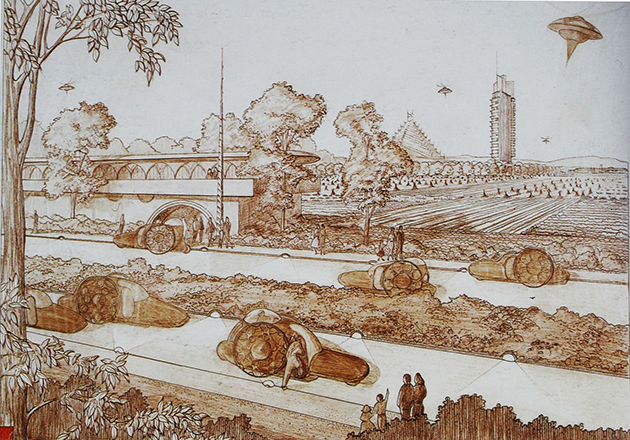 Ground vehicles envisioned by Frank Lloyd Wright for Broadacre
Ground vehicles envisioned by Frank Lloyd Wright for Broadacre
As described by Russell Hitchcock, in his essay on the work of Wright, Broadacre project is a representation of an ideal city, whose disclosure is based on a scaled three-dimensional model that includes a county type four square miles or 6,5 km2 and which is organized life 1.400 families. In that hypothetical territorial space would provide for a joint general organization enrolling the pieces that represent buildings designed by the architect. The idea is complemented by many designs from the previous description tested in The disappearing city. This representative of the intended transport management, appropriate architectures and lifestyle proposed. There are many ideas incorporated formal later would give rise buildings and concrete projects that would realize the architect. This is the case in residential architecture as referring to the concept of affordable houses called Usonian. Or housing projects grouped in height as the tower of St. Mark 1929, from which it would build a version in Pittsburg 1953. And other formal research proposals which then materialize in the project called The Illinois Tower 1956.
The idea territorial strategies also included the insertion of factories and production structures decentralized primary character as agricultural units prefabricated, Walter Davidson projected in 1932. This interrelated with aerodynamic markets, Shared service centers and gas stations for refueling of aestheticized land vehicles and aircraft envisioned by the Taliesin Fellowship team under the supervision of the teacher.
As recommended wrightianas-in a sort of almost anarchistic approach- not have possession of the soil, repos only, without home or rental. The sight anti-Community outlawed the railroads and streetcars like the gates and fences bounding the nonexistent property. In this conceptualization ruralista, tall buildings would be an exception and should always be embedded in large communal parks, almost as a counterpoint to a formal extensive landscape significantly horizontalizado.
 View a agromercado de la ciudad de Broadacre. In the first place, different level crossing road. The background the great central tower.
View a agromercado de la ciudad de Broadacre. In the first place, different level crossing road. The background the great central tower.
 Formalization designed for them crosses roads
Formalization designed for them crosses roads
If one was to promote the Vuelta stages civilizatorios more rooted it with pastoral y la naturaleza salvaje. In front of them the rational urban utopias of European court, centered in the mejor of living conditions of the masses in them them cities, the American view tendría character more romantic return to a more happy past few Manera linked al landscape virgen. Frank Lloyd Wright, siguiendo to them as American romantic Emerson, Whitman and Thoreau, advocated the ideal of individualism rooted in a territorial space extensive ruralization. It was the result of an adaptation to the feelings of the majority of Americans then: pantheistic ideology in search of indefinite progress embedded in Nature with a capital. Wright appealed to express these ideas of progress also visual paraphernalia and prototypes forms various authors then rehearsed novelistic genre of science fiction. All movement trying to imagine a radical advance in lifestyle for years to come. Besides trips to the Moon and to Mars, many trying to conceive the wonders of tomorrow with confident optimism indefinite progress and humanity overall what would its fullest expression in the universal expositions held then.
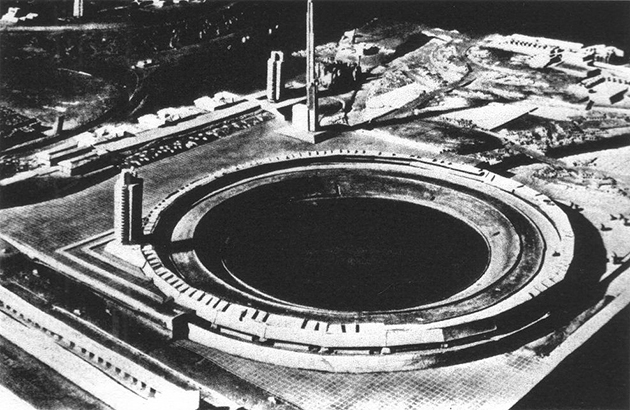 Detail of the main stadium of the city
Detail of the main stadium of the city
 Section of the territorial division-farm housing
Section of the territorial division-farm housing
And Broadacre, Wright tried to help formalize a kind of territorial colonization to country-specific. Surprisingly, quite coincide with that then occur in the United States: extensive suburbanization of cities and the progressive abandonment of its consolidated centers, facilitated by the construction of an extensive network of highways from the federal administration that would occur in the mid-twentieth century.
Somehow, those ideas end up massively imposing an unplanned way in the North American continent. And is that the concepts of Wright would agree enough with the thought and ideology of that society of pioneers for almost a hundred years; what then end up setting the dominant life form in the United States, over much of the last decades.
More information:
Broadacre city. Media Art Architecture
The disappearing city. Books associated relationship Broadacre City
Broadacre City. The city radical. 09/05/2009
 Broadacre city. General outline of the planning organization
Broadacre city. General outline of the planning organization
 Perspectiva interior de una de las unidades de vivienda Cloverleaf. Frank Lloyd Wright, arquitecto
Perspectiva interior de una de las unidades de vivienda Cloverleaf. Frank Lloyd Wright, arquitecto




